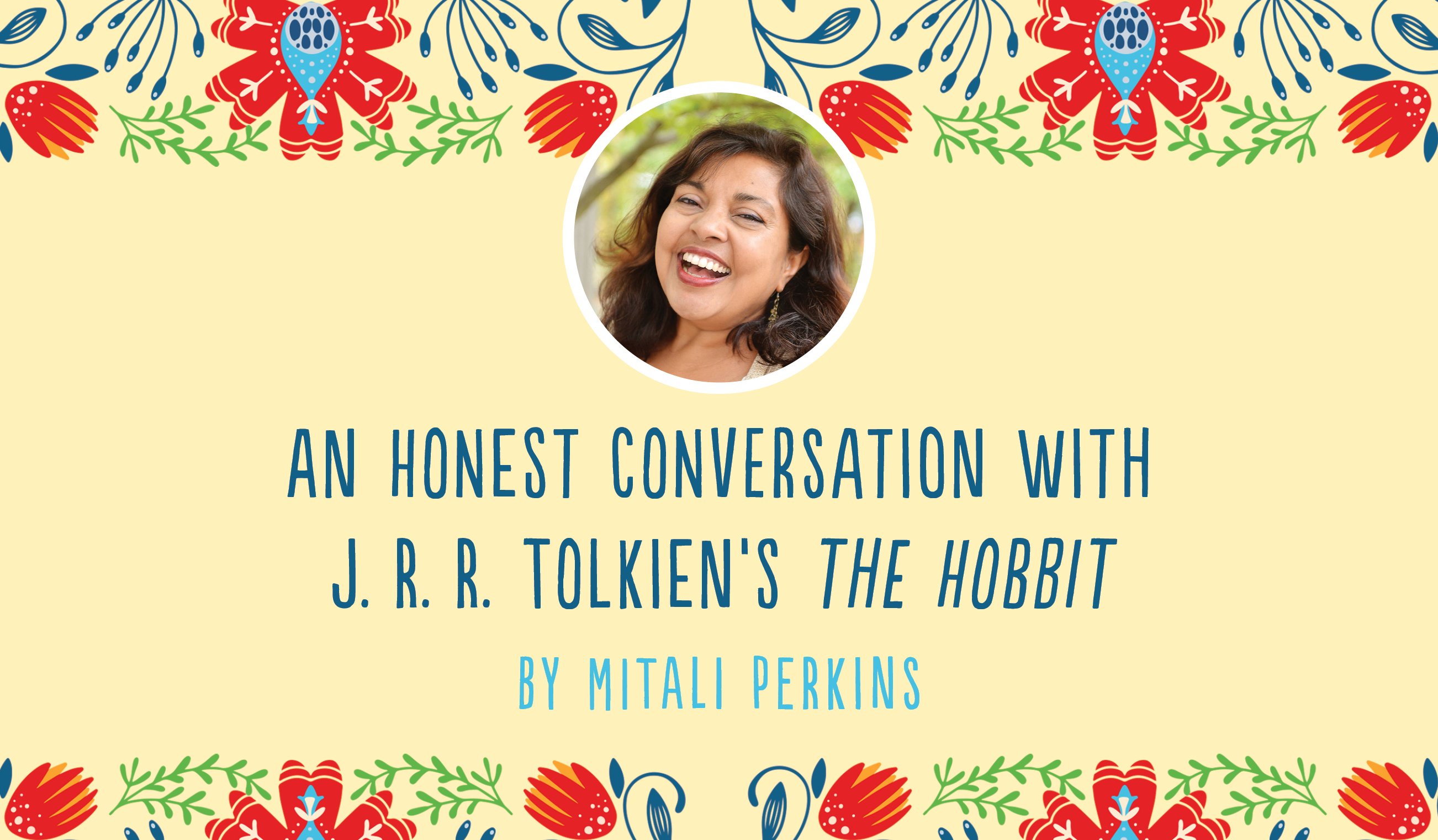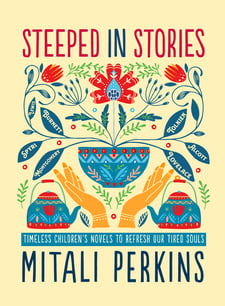
Many aficionados of Middle Earth—the magical realm created by J. R. R. Tolkien, or Uncle John Ronald, as his nephews in real life called him—prefer the Lord of the Rings trilogy over The Hobbit. The trilogy has deeper themes and a more complicated plot than The Hobbit does. It even features a few secondary female characters, unlike The Hobbit. But for me as a young adult decades ago, it was a gift to encounter Bilbo Baggins as the main character of a story. I could easily cheer for this engaging, earthy, perpetually hungry hobbit, the name Uncle John Ronald coined for mythical creatures dwelling in a peaceful land called “The Shire.” I was about to make crucial life decisions, and I needed a hero who could inspire me to be courageous. As a seasoned reader by the time I was a teenager, it was easy to imagine myself as any protagonist; I didn’t need the mirror of gender to see myself in Bilbo. He has more foibles than Frodo, the protagonist of The Lord of the Rings. With a love for comfort and safety and a tendency toward complaining and conniving, Bilbo was me. He still is. Perhaps he’s you too.
Before we explore the courage Bilbo demonstrates in The Hobbit, I’d like to have a robust imaginary conversation with Uncle John Ronald about adoption, race, and culture.

First, I’d want to talk about how so many novels feature adoptees, but few explore the grief and trauma of adoption. Take Frodo, the hero of the Lord of the Rings trilogy, who is raised in the Brandybuck clan on his mother’s side for nine years before being adopted by his paternal cousin Bilbo. We’re told briefly that Frodo lost both parents when he was twelve in a nighttime boating accident. Wouldn’t he remember their drowning at different points through his hero’s journey? Why did they both go outside at night in a boat, leaving their only son behind? Why doesn’t he seek to learn more about them?
Second, I’d like to ask Uncle John Ronald how views of race and culture in the real world find their way into an imaginary world. For example, when describing dwarves, hobbits, dragons, witches, goblins, orcs, and elves, a writer might be tempted to use “species-wide” character descriptions. In the Harry Potter series, for example, all goblins are shrewd, swarthy, and calculating. These “people-wide” generalizations about characters in fantasy novels echo stereotypes affiliated with different ethnic groups in our own world—like a customer service worker who eyes me dubiously as I approach, and instantly I assume she’s thinking all immigrants from South Asia want to haggle over prices.
But let’s confront the particulars in Uncle John Ronald’s books. In Middle Earth, Gollum the villain descends from the darker-skinned branch of hobbits; Frodo, the hero, has fairer-skinned ancestors. When a slain Haradrim warrior crashes at Sam’s feet, we learn that the enemy has brown skin and black plaits of hair braided with gold. The people of Far Harad are described as “black men like half-trolls with white eyes and red tongues” and “troll-men.” Throughout the trilogy, good elves are tall and fair, and evil orcs are dark-skinned and squint-eyed. A letter describes the author’s vision of these irredeemable creatures as “squat, broad, flat-nosed, sallow-skinned, with wide mouths and slant eyes; in fact degraded and repulsive versions of the (to Europeans) least lovely Mongol-types.”
At least Uncle John Ronald modified his intentions a bit by adding “to Europeans”; still, as a teen reader, I flinched at the Asian descriptions of evil characters in The Lord of the Rings. Erstwhile fan Christina Warmbrunn writes poignantly about how she sees Blackness represented in Middle Earth:
In The Return of the King . . . there is a harrowing sequence where the halflings Frodo and Sam pretend to be Orcs to sneak past Sauron’s army:
Presently two orcs came into view. One was clad in ragged brown and was armed with a bow of horn; it was of a small breed, black-skinned, with wide and snuffling nostrils: evidently a tracker of some kind (Ch. 2, “The Land of Shadow”).
This passage not only codes Orcs as Black, it uses specific descriptors (“wide and snuffling nostrils”) that echo Jim Crow-era caricatures. The use of the pronoun “it,” as well as the animalistic vocabulary (“breed,” “tracker”), echoes white supremacist ideologies of purity that differentiate Black people as a separate, explicitly subhuman species.
And then there’s the Jewishness of the dwarves. When we meet the dwarves in The Hobbit, they are a group with shared negative attributes, “calculating folk with a great idea of the value of money; some are tricky and treacherous and pretty bad lots.” More than three decades after publishing the book, the author spoke about the Jewish-Dwarvish connection. “I didn’t intend it, but when you’ve got these people on your hands, you’ve got to make them different, haven’t you?” he said during a 1964 BBC interview. “The dwarves of course are quite obviously, wouldn’t you say that in many ways they remind you of the Jews? Their words are Semitic, obviously, constructed to be Semitic. The hobbits are just rustic English people.”
During the Second World War, however, in a drafted letter, he clarified his position on the Jewish people to a Nazi-sympathizing German publisher who asked about his racial ancestry. “Thank you for your letter,” Uncle John Ronald wrote. “I regret that I am not clear as to what you intend by arisch [Aryan]. I am not of Aryan extraction: that is Indo-Iranian; as far as I am aware none of my ancestors spoke Hindustani, Persian, Gypsy, or any related dialects. But if I am to understand that you are enquiring whether I am of Jewish origin, I can only reply that I regret that I appear to have no ancestors of that gifted people.”
Another regret he had was over the treatment of Black people in his native South Africa, which he described as “horrifying” in a letter to his son. I wonder how he might have reacted to Christina Warmbrunn’s sorrow if he could have met her face-to-face at the end of his life, when his oldest grandchild was about her age. Would he have expressed deep regret about the ways he employed race in his books? Would he have admitted to their harmful flaws?
We might be able to imagine such a change taking place in Uncle John Ronald over the course of his life. Even Gandalf evolves from the start of The Hobbit, where he “never minded explaining his cleverness more than once,” to his last appearance in Unfinished Tales: The Lost Lore of Middle-Earth. “Merry he could be,” Uncle John Ronald wrote, “and kindly to the young and simple, and yet quick at times to sharp speech and the rebuking of folly; but he was not proud, and sought neither power nor praise, and thus far and wide he was beloved among all those that were not themselves proud.”

One of the “simple” characters who saw Gandalf clearly was Bilbo Baggins. To this day, a closer look at Bilbo’s hero’s journey encourages me to choose magnanimity over pusillanimity. (Now there’s a pair of words we don’t use in everyday conversation.) According to Thomas Aquinas, magnanimity (from Latin magnus, “great,” and animus, “soul”) is a “stretching forth of the mind to great things.” We are magnanimous when we desire and attempt great things. Pusillanimity (from Latin pusillus, “very small,” and animus, “soul”), on the other hand, is a smallness of soul that shrinks from noble or arduous tasks. This vice, which stems from fear, is kept in check by the virtue of courage.
A hero must resist pusillanimity to embark on a journey. Joseph Campbell, an American mythologist and writer, noticed storytelling patterns throughout the world that followed the same narrative arc. In his book The Hero with a Thousand Faces, Campbell described the three stages of a monomyth, or heroic journey: departure (sets out on an adventure to an unknown world, willingly or unwillingly), initiation (goes through trials, meets friends, conquers foes), and return (in some sense to the place of embarkation, albeit changed and victorious). This commonality in story structure across cultures and throughout time reflects an innate human desire for a life of purpose.
Maybe I, like Bilbo, was designed to be the protagonist of a page-turner.

But courageous actions aren’t enough on their own; courageous motivations are needed also. Bilbo’s heroic journey has an inward as well as an external arc. As his actions grow bolder, his intentions become nobler.
In his confrontation with Gollum, Bilbo makes a courageous choice driven by neither fear nor pride. He is moved instead by pity, opting not to stab and kill a defenseless opponent but to escape instead. The presence of such compassion fuels courage; the lack of it is linked to pusillanimity. Pope Francis made this clear when discussing why people are reluctant to visit prisoners. “They think, ‘It’s dangerous! They are bad people,’” the pope said about our fear. “Each one of us is capable of doing the same thing done by that man or woman in jail. All of us are capable of sinning and making the same mistake in life. They are not worse than you and I.”
Bilbo’s compassion likely stems from the connection he has made by playing a game of riddles with Gollum, a pastime common to both from childhood. Hobbits know that the riddle game is so old and sacred that even evil creatures don’t like to cheat when playing it. Uncle John Ronald stirs pity in the reader’s heart by taking us into Gollum’s mind during this scene: “Riddles were . . . the only game he had ever played with other funny creatures sitting in their holes in the long, long ago, before he lost all his friends . . . when he lived with his grandmother in a hole in a bank by a river.” It’s almost as if compassion for this miserable opponent creates space in Bilbo’s soul, because he’s filled with a new strength that allows him to leap over Gollum’s head.
If compassion generates courage in Bilbo’s soul, so does loyalty, which starts to stir in him soon after his escape from Gollum and the goblins. He wanders down the mountain and through a valley, but soon a disconcerting thought begins to plague him: Should he go back into the dark tunnels to search for his friends? After some rumination, he decides that doing so is his duty and reunites with his friends. Loyalty also leads him to accompany the dwarves into the elves’ prison and helps him make up his mind at the last minute not to desert them. Bilbo stays true to his friends despite their fickle feelings toward him. Sometimes the dwarves grumble at and blame him, at other times they laud and thank him, but Bilbo always keeps his end of the bargain.
Eventually, this admirable quality of tenacity in friendship leads Bilbo to alienate his friends in order to save them. Consumed with greed over treasure, Thorin refuses to pay anything to those who killed the dragon at great cost to themselves and damage to their town. When Bilbo gives up the beautiful Arkenstone in an effort to make peace, both the Elvenking and Bard, the leader of men, greet him with honor. Gandalf claps Bilbo on the back, reminding everyone present that his chosen burglar always exceeds expectations.
Bilbo does more than give up the Arkenstone—he risks his own life. When he confesses his deed to an enraged Thorin, the King of the Dwarves almost tosses Bilbo over a cliff. In the nick of time, Gandalf manages to save “his Burglar.” By the end, though, Mr. Baggins gains what he initially sought: the dwarves’ gratitude and admiration. A repentant Thorin’s last words are a testament to Bilbo’s character and the gift of a “small” life that delights in friends and fire and feast: “There is more in you of good than you know, child of the kindly West. Some courage and some wisdom, blended in measure. If more of us valued food and cheer and song above hoarded gold, it would be a merrier world.”

Just before they cross the bridge back to Hobbiton, where the adventure started, even Gandalf is surprised by the change in Bilbo’s character, declaring that he’s not the same hobbit who left the Shire. The wizard is right: Bilbo has changed, but our hero has also become more of himself.
It soon becomes clear, however, that he has lost his reputation at home. Even though now he is a friend of elves, honored by dwarves, men, and wizards, in his own community, he is seen as strange and not respectable. Bilbo, however, no longer cares about the admiration of others. He spends the rest of his days in the Shire happily, writing poems and visiting the elves from time to time.
Uncle John Ronald ends the story by underlining one attribute that hasn’t changed: Bilbo’s humility. Gandalf affirms their friendship and the quality of his character but also reminds him of his rightful place as one small hobbit in an enormous world. Bilbo answers with a grateful laugh. He sees both the smallness and the usefulness of his true self—a realization that is perhaps the greatest victory of all.
A call to adventure like Bilbo’s, typically in the guise of disruption and chaos, is bound to come in every person’s life. No matter our circumstances, each of us can muster the courage to accept a divine invitation and embark on a moral journey. If we accept the call, we begin the slow, arduous process of transformation. Like Bilbo, we will make foolish mistakes, but the good news is that we will be mentored by someone who loves us as we muddle along. Through small and big tests, as we resist pusillanimity, our courage will blossom. “Life shrinks or expands in proportion to one’s courage,” wrote Anaïs Nin.
Hopefully, by the end of our journey, we will achieve something we never dreamed of when we took that first step. We will have become heroes, albeit unsung and unseen by most folk, much like Bilbo Baggins the Magnificent. Maybe that’s why so many of us read and reread The Hobbit: we sense a call to adventure from God and long for the courage to respond to it.
This is an excerpt from Steeped in Stories chapter 6: Pusillanimity and Courage: The Hobbit by J. R. R. Tolkien.


